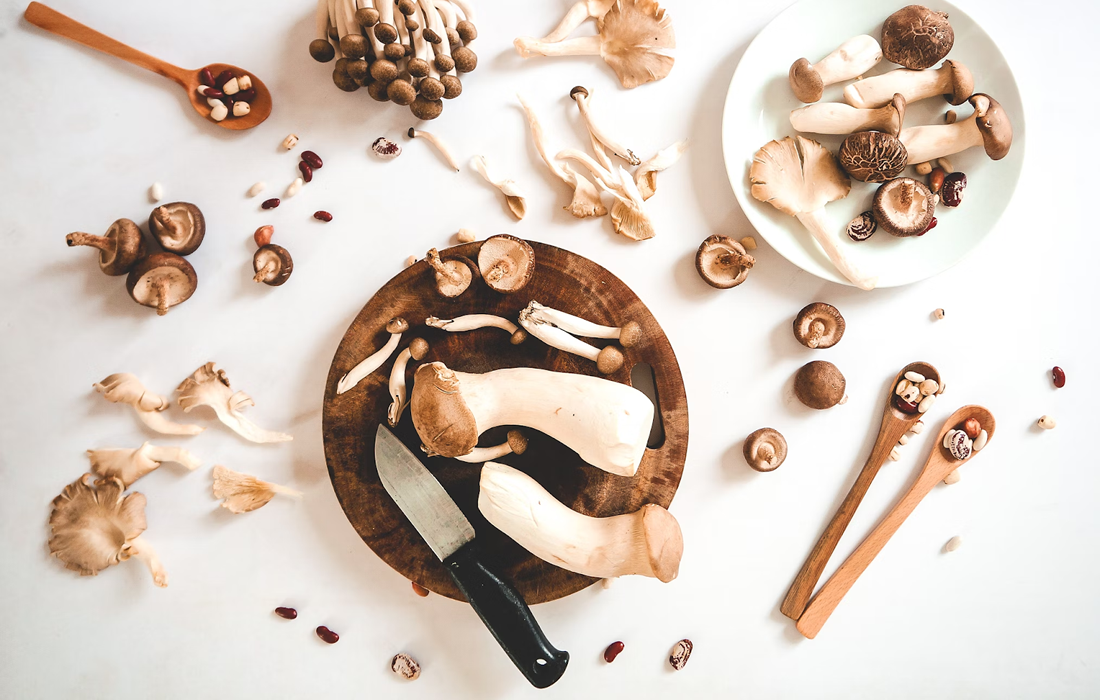Lifestyle, Nutrition and Supplements
Health Benefits of Mushroom Consumption
Mushrooms are regarded as a vegetable but they are actually fungi. They have been consumed as a functional food by many cultures for centuries because of their unique taste, subtle flavor, and role in a healthful diet, being low in calories, carbohydrates, sodium, and fats and cholesterol-free.
Edible mushrooms are rich in compounds such as phytochemicals (alkaloids, phenolic acids, flavonoids, carotenoids), fiber, polysaccharides, selenium, B and D vitamins, and antioxidants like glutathione and ergothioneine.
Recent studies have suggested that mushrooms have beneficial effects on cognitive function. Animal studies have shown that mushrooms can protect cells from oxidative damage and inflammation, both of which have been implicated in the pathogenesis of conditions like dementia.
Reduced Risk of Dementia
A study by Shu Zhang and colleagues showed that frequent mushroom consumption is significantly associated with a lower risk of incident dementia, even after adjusting for different confounding factors.
For the study, the team used information from the Ohsaki Cohort 2006 Study, which included information from 31,694 men and women aged ≥65 years, in Ohsaki City, northeastern Japan, on 1 December 2006. For this study data from 13,230 individuals was included.
Daily mushroom consumption and lifestyle factors were taken into account, and dementia incidence was measured.
The team found that the consumption of mushrooms more than 3 times per week was associated with a lower risk of dementia.
Lower Cancer Risk
A systematic review and meta-analysis evaluated published in the journal Advances in Nutrition, evaluated the association between mushroom consumption and the risk of cancer at any site.
The research included a total of 17 observational studies in which higher mushroom consumption was associated with a lower risk of total cancer, lower risk of breast cancer, and non-breast cancer.
One meta-analysis showed that higher mushroom consumption of 18 g/d was associated with a 45% lower risk of total cancer than an intake of 0 g/d.
Why do they have these effects?
The potential mechanism by which mushrooms can have these beneficial effects on the body are due antioxidant properties of the components ergothioneine and glutathione. Oxidative damage due to an excess of free radicals is an important causal factor in the aging process and diseases of aging including many cancers, with amounts being related to poor lifestyle habits such as an unhealthy diet.
Mushrooms are a potent source of key antioxidants that can mitigate oxidative stress and improve human health and promote quality of life. In particular, ergothioneine, a sulfur-containing amino acid has a strong antioxidant activity and is obtained exclusively through dietary sources, like mushrooms.
Depending on the variety, one serving of mushrooms can contain 2.4 to 4.9 mg of ergothioneine. Mushrooms that contain the highest amounts of ergothioneine include King oyster, maitake, oyster, and shiitake varieties. It can also be found in black beans, red beans, and oat bran.
A good way to incorporate mushrooms into your diet is to blend them with beef, turkey, or chicken for added nutrients and less meat intake. But they can be added to many foods, such as burgers, tacos, omelets, and pasta to enhance the flavor, while also adding the health benefits of mushrooms.
Sources:
Zhang S, Tomata Y, Sugiyama K, Sugawara Y, Tsuji l. Mushroom Consumption and Incident Dementia in Elderly Japanese: The Ohsaki Cohort 2006 Study. J Am Geriatr Soc. 2017;65(7):1462-1469. do:10.1111/ jgs.14812.
Ba DM, Ssentongo P, Beelman RB, Muscat J, Gao X, Richie JP. Higher Mushroom Consumption Is Associated with Lower Risk of Cancer: A Systematic Review and Meta-Analysis of Observational Studies. Adv Nutr. 2021;12(5):1691-1704. doi:10.1093/ advances/nmab015
Jody Bergeron. (2019, Jun 21). Magnificent Mushrooms. American Society for Nutrition. Retrieved from:
https://nutrition.org/magnificent-mushrooms/#:~:text=Mushrooms%20that%20contain%20the%20highest,red%20beans%20and%20oat%20bran.
Image from:
Photo by Thanh Soledas on Unsplash

